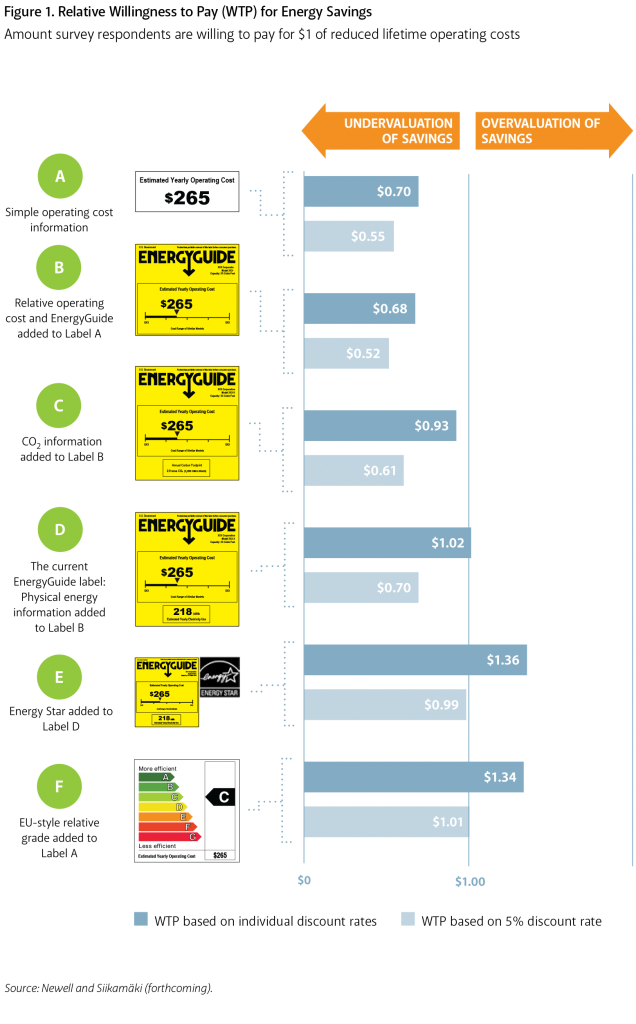By Richard Newell and Juha Siikamäki.
To minimize costs, consumers looking to purchase a new appliance should give equal weight to the purchase price and the discounted operating cost over the appliance lifetime—that is, they should be willing to pay $1 in increased purchase cost for each dollar of reduced lifetime operating cost of the appliance. But many experts argue that in reality, consumers undervalue energy savings. This results in the classic energy efficiency gap—consumers are reluctant to adopt energy efficiency investments that could save them money down the road.
One possible reason is that understanding the operating cost can be a challenge that involves calculating the daily kilowatt-hour consumption rates of appliances to estimate annual costs and energy consumption per year. To streamline this process, appliance manufacturers are required to provide information about the operating costs of major household appliances through labeling programs, such as EnergyGuide. But do these labels actually encourage energy efficient purchases? And what label features most effectively encourage investment in energy efficiency?
In an experimental study to examine these questions, we evaluated the effectiveness of different energy efficiency labels in guiding households’ energy efficiency decisions. We surveyed 1,248 households and used randomized treatments with alternative energy efficiency labels to see how the label and the information it contains affects households’ willingness to pay for energy efficiency. The labels in Figure 1 on page 16 represent an illustrative subset of the labeling treatments used in the experiment. We sampled respondents who are the owners of single-family homes and asked them to make choices about purchasing a central household water heater.
We found that providing simple information on the cost of operating the appliance was the most important element for encouraging investments in energy efficiency. Information on physical energy use and carbon dioxide (CO2) emissions has additional but lesser importance. And labels that endorse or grade appliance models have a substantial impact on encouraging choices with higher energy efficiency, potentially even beyond what makes economic sense.
Energy Efficiency Labels
The current EnergyGuide label (Figure 1, Label D) provides the baseline for most of the treatments we administered. Our experimental approach involves evaluating both the information content and the style of representing the information on the label. We evaluated the use of economic information, physical information on energy use and CO2 emissions, a letter grade indicating efficiency rank, the Energy Star logo, as well as the inclusion or exclusion of the range of energy costs of other, similar appliance options in the market. To evaluate the effectiveness of these attributes, we fielded multiple treatments, which either included or excluded the above information content, to enable us to empirically identify the effect of a specific piece of information.






